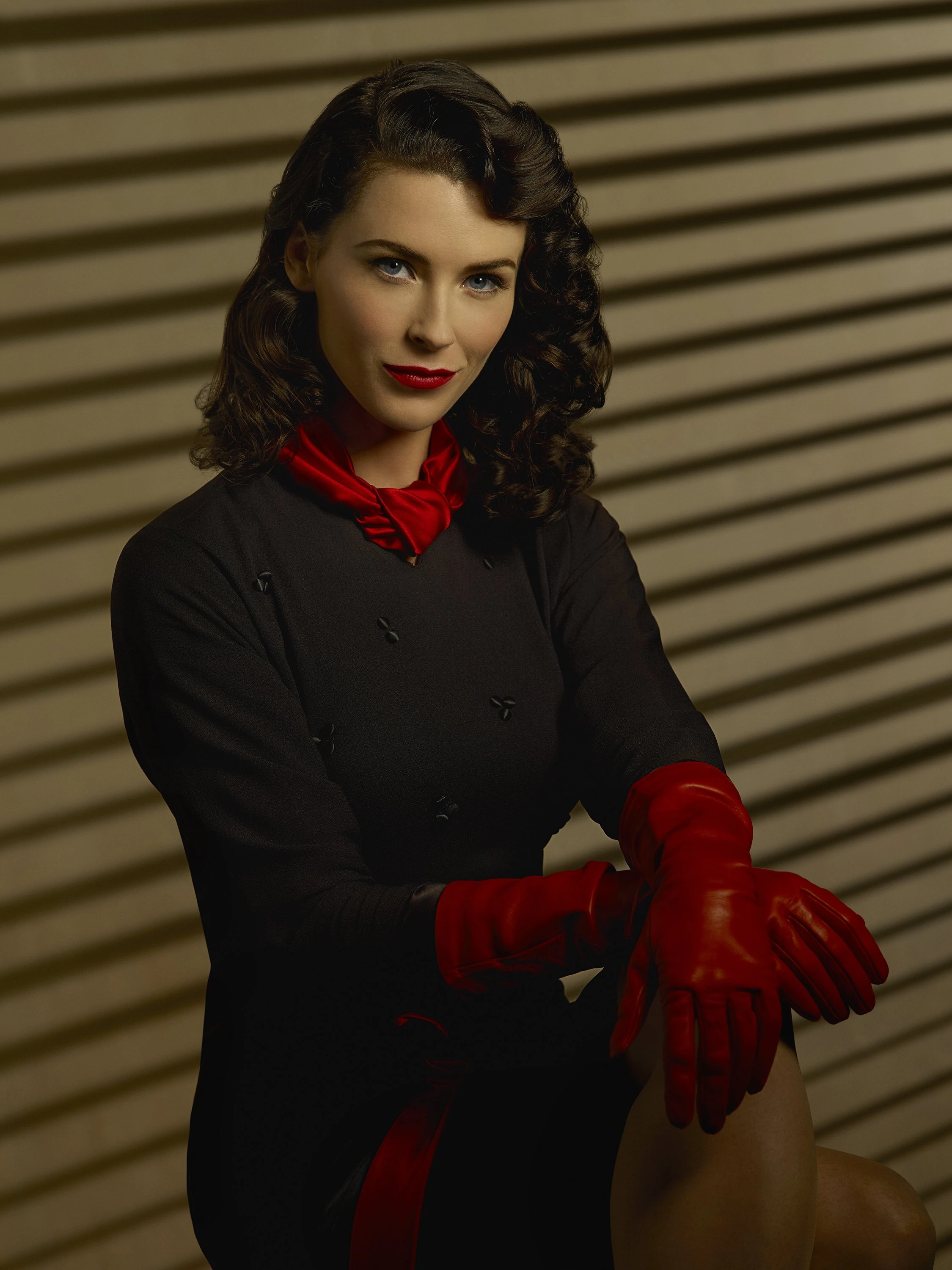 |
| Dottie Underwood. In this image you can see that she looks shy and innocent. |
This week, instead of focusing my attention on
Agent Carter, I will be focusing on Dottie Underwood, Agent Carter’s main
target in season 1. During the course of season 1, Dottie Underwood was hired
by the Russian government to come to America and steal Howard Stark’s
inventions. She is portrayed as someone who is innocent and shy, while she is
undercover. In reality, she is very strong and dangerous, although her weaknesses
are exposed during season 2. In the eyes of the Russians, Underwood was seen as
a hero; to the American people, she was seen as a threat.
Epic framing is centered around the idea that a
hero/ heroine “embodies ideal values of the social order” (Buerkle, Mayer,
Olson, 190). Buerkle, Mayer, and Olson paraphrase one of Kenneth Burkes
characteristics of epic framing from A
Grammar of Motives, “A hero maybe a person who at one time has committed
heroic acts, has the potential to perform heroic feats, or embodies the attitudes
and virtues that are placed central to the hierarchical existence” (Buerkle,
Mayer, Olson, 190). When a person represents a particular groups morals and
ideals, and behave in a heroic way, it makes them a hero in people’s eyes.
 |
| This image depicts what she was really after, and refutes her "adapted" persona of being innocent and shy. |
Even though Dottie Underwood was a Russian spy
and sought after the American government, in the eyes of the Russians she was a
hero. Underwood upheld the “social order” of the Russians, because her main
goal was to help the Russians destroy the Americans during World War II. In the
first season, she seduced Howard Stark and stole some of his most dangerous
inventions, which in the future, the Russians planned on using them to their advantage
in order to come out victorious. Not only was she seen as a threat because of
what she was after, but because she was highly trained in defeating the enemy
and was deemed unstoppable. Another one of her advantages to getting what she
wanted was her persona. Underwood was depicted as someone that was very lovable
and caring of others, which only furthered her in reaching her main goal. Her
persona also shows that she is the perfect fit of a Russian hero, strong,
determined, and willing to do whatever is necessary to get the job done, “I’ve
puled out my own teeth, my own nails, my own hair. I’ve burned my own flesh
with a blowtorch. I’m no Nazi harlot. And you are wasting my time,” says Underwood
as she is being held captive and tortured. Her action of stealing Stark’s
inventions to help Russia defeat America during World War II and disguising
herself as someone she was not, places her as a hero with the Russians and as
an enemy for the Americans. Dottie Underwood is a character in Marvel’s Agent
Carter, that falls under the characteristics of Kenneth Burke’s epic framing,
as she is interested in protecting the values of the Russians and is seen as a
hero in Russia during the first season. She was framed as a hero, but then is seen as a traitor because she was not able to accomplish her mission for the Russian Government. Underwood was no hero, she was just portrayed in a way that the audience believed she was a hero in the eyes of the Russians, but in the end her weaknesses were exposed and she was defeated.
Video of Dottie Underwood fighting a man looking for Agent Carter.
Promo of season 2, episode 6 and 7. In this video, you can see how
her roles have shifted from season 1 to 2.
Links to pictures/ Videos
1.http://vignette4.wikia.nocookie.net/marvelcinematicuniverse/images/7/74/Dottie_Underwood.jpg/revision/latest?cb=20150129040647
2. http://www.mcmbuzz.com/wpcontent/uploads/2015/09/Dottie_Underwood_ agent_carter_sniper.jpg
3. https://www.youtube.com/watch?v=np_O4gpJID8
4. https://www.youtube.com/watch?v=OxNaGSKnLMw

